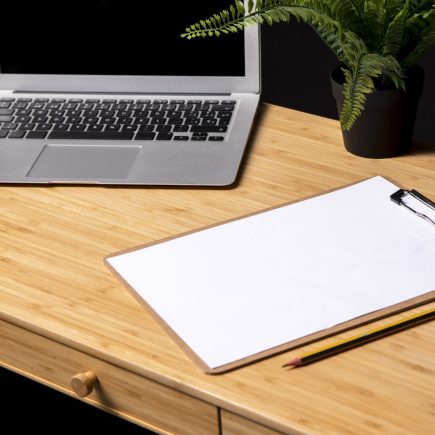Your outdoor patio serves as an extension of your home. Whether you’re hosting vibrant summer barbecues, sipping a cup of coffee in the morning, or simply relaxing after a long day, the arrangement of your patio furniture plays a pivotal role in shaping the experience. A well-thought-out patio setup merges comfort, functionality, and style, turning every moment outside into an enjoyable experience.

This article will walk you through the key elements of arranging patio furniture. From choosing the perfect layout to incorporating design principles, we’ll help you maximize the potential of your outdoor space, transforming it into a relaxing retreat.
Step 1: Define the Purpose of Your Patio
Before you begin rearranging or purchasing patio furniture, it’s essential to define the primary function of your outdoor space. By doing so, you can choose the best furniture and layout for your needs. Consider how you plan to use the patio:
1. Entertaining Guests
If the patio is for hosting gatherings, you’ll want to arrange seating that encourages conversation. Consider chairs facing one another or creating a sectional seating area that wraps around a central table. This promotes easy interaction.
2. Al Fresco Dining
If your patio serves as a dining space, center the layout around a dining table. Make sure there’s enough room for chairs, as well as ample space for foot traffic around the table.
3. Relaxation and Lounging
For a more tranquil setting, incorporate comfortable seating like chaise lounges, soft cushions, or even hammock-style seating. Arrange the furniture so that it faces a calming feature such as a garden, view, or fire pit.
By identifying the primary purpose of your patio, you’ll know what furniture to select and how to arrange it to make the space functional and enjoyable.
Step 2: Start with a Focal Point
Every well-designed patio has a focal point that anchors the space. This central feature draws attention and makes the area feel more cohesive. The focal point could vary depending on the purpose of your patio:
1. A Fire Pit or Fireplace

If you want to create a cozy, social atmosphere, place seating around a Fire Pit or fireplace. This becomes the natural gathering point in your patio, providing warmth and a place for everyone to gather.
2. A Dining Table

For a space focused on dining, the Dining Table should be the centerpiece. Position the table centrally, ensuring there’s enough space for chairs and easy access to the table.
3. A Water Feature

A fountain or pond can add serenity to your patio. Position seating to face the Water Fountain, letting its soothing sounds enhance the experience.
4. A Beautiful View
If your patio overlooks a garden or scenic landscape, arrange your furniture so that everyone can enjoy the view. The furniture should be positioned to face the view, turning it into the natural focal point of your patio.
Choosing a strong focal point and arranging your furniture around it will create a unified look and draw attention to the most attractive feature of your patio.
Working with Different Patio Shapes
The size and shape of your patio will influence the best layout for your furniture. Different patio shapes require different approaches:
1. Rectangular Patios

For long, narrow spaces, divide the patio into distinct zones. For instance, one area can be dedicated to dining, while another can serve as a lounging space. Use a rectangular dining table to match the shape of the patio, creating a cohesive look. You might also add a linear sectional sofa to elongate the space further and enhance its balance.
2. Square Patios

Square patios lend themselves well to symmetrical layouts. Arrange your furniture symmetrically to create balance and order. For instance, a square table in the center, with matching chairs around it, can help highlight the sense of symmetry. Round tables and ottomans can soften the sharp edges of a square space, making it feel less rigid.
3. Small Patios

In smaller spaces, it’s important to opt for multi-functional furniture. Consider benches with built-in storage or a small café-style table for compact dining. Foldable or stackable furniture can help save space when not in use, and it can easily be rearranged for different occasions.
4. Large, Open Patios

For larger patios, use sectional sofas or oversized dining sets to fill the space aesthetically without making it feel empty. These pieces provide ample seating and create a balanced atmosphere. To break up the space visually, you can use furniture arrangement to create distinct zones for dining, lounging, and relaxing. For instance, arrange the seating in a way that separates areas while maintaining a cohesive flow across the patio.
By adapting your layout to the shape and size of your patio, you can ensure the space is both practical and visually pleasing.Step 4: Prioritize Comfort and Flow
A good patio layout isn’t just about the looks, it’s about how it functions for those using it. Ensuring comfort and ease of movement is key to creating a space that’s inviting and practical. Here’s how to do it:
1. Allow for Clear Pathways
Ensure there’s at least a 3-foot clearance around tables and high-traffic areas. This provides enough space for people to move freely around the patio without feeling cramped or obstructed.
2. Use Adjustable Furniture
Incorporating adjustable seating, such as recliners or modular seating, allows you to cater to different seating preferences. This ensures that everyone can find a comfortable spot, whether they prefer a lounge chair or a more upright seat.
3. Test the Grouping of Furniture
When arranging seating, try out different configurations to ensure that it encourages conversation. Avoid overcrowding; make sure that furniture is arranged to allow easy conversation without people feeling cramped.
By prioritizing comfort and flow, you’ll create a patio that feels welcoming and easy to use, whether you’re hosting a large gathering or relaxing with family.
Step 5: Leave Room for Flexibility
Outdoor spaces often need to adapt to different occasions and seasons. Design your patio with flexibility in mind to ensure it can change with your needs:
1. Lightweight Furniture
Choose lightweight furniture pieces that can be moved easily. This is ideal if you need to change the layout for larger gatherings, intimate dinners, or seasonal events.
2. Modular Seating
Modular furniture, such as sectionals with removable pieces, offers the flexibility to rearrange seating as needed. This can be especially useful for adjusting the space for varying guest counts or different activities.
Being able to adjust the layout based on your needs will ensure your patio is always ready for any occasion, whether it’s a family dinner or a weekend BBQ.
Make Your Patio a Place You’ll Love
Arranging your Patio Furniture thoughtfully can completely transform your outdoor space, making it functional, comfortable, and visually appealing. By defining the purpose of your patio, choosing a focal point, selecting the right layout, and prioritizing comfort and flow, you’ll create a perfect outdoor haven for both relaxation and entertaining.
Pairing these strategies with the right accessories and leaving room for flexibility will ensure your patio is ready for any occasion, from family dinners to intimate evening gatherings.
FAQs
1. How do I arrange patio furniture for privacy?
To arrange patio furniture for privacy, use tall plants, privacy screens, or trellises to create a secluded space while maintaining an open, functional design.
2. What’s the best furniture arrangement for a family-friendly patio?
For a family-friendly patio furniture arrangement, choose durable, easy-to-clean pieces and arrange them to encourage interaction, with clear pathways for children to play and move around.
3. How can I incorporate plants into my patio furniture arrangement?
To incorporate plants into your patio furniture arrangement, place tall plants or shrubs for privacy and smaller plants for color, ensuring they enhance the flow of the space without overcrowding.






















